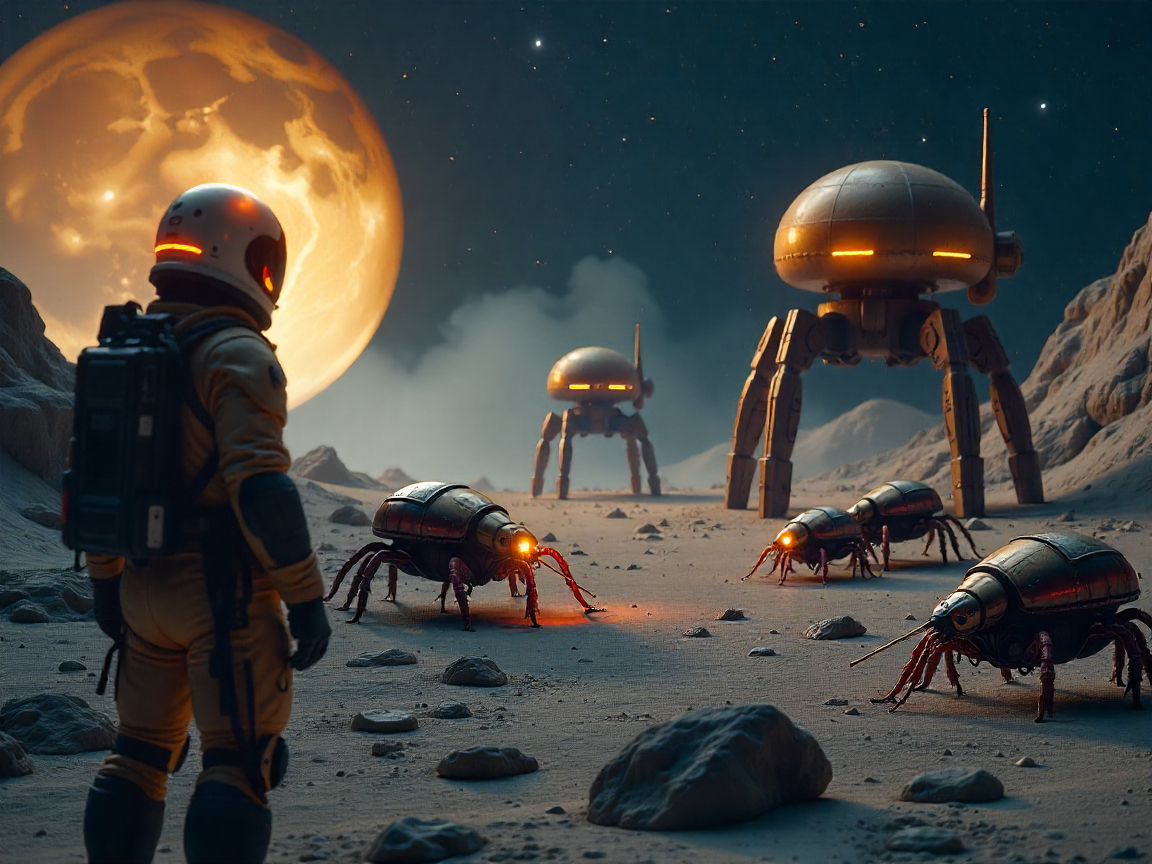
Just imagine a factory where not only its machines are building products, but are building more of themselves as well. No human hands, no supply chain delays but just a continuously reproducing loop of a robot. It is a sci-fi sounding but already labs at NASA and MIT are in the stages of testing prototypes. The promise? Construction of space colonies through robot swarms, repairing of natural disasters over night, and endless manufacturing are all possibilities enabled by it. The peril? Meltdowns in economy, military nightmares and ecological catastrophes which we cannot roll back. Whether or not self-replicating robots are on the horizon is not a question, it is whether or not humanity is ready to handle that situation.
The Science: How Near are We to Self-Replicating robots?
Builder robots at the University of Pennsylvania were in the news last year, making themselves into new functional units by rearranging their own modules, like LEGO pieces that recombined (Science Robotics, 2023). In the meantime, the Innovative Advanced Concepts program of NASA plans to finance prototypes of factories on the moon using the technology of 3D-printing bots that may reproduce using lunar dust. It is not only mechanical systems as well. At Cornell, researchers are working on the use of DNA to drive assembly, among other things, making it well-nigh impossible to determine what exactly the object in question is: robot or organism.
But there is a catch: real self-replication needs more than smart design. Such machines require energy independence, the gathering of materials, and recovering errors to keep them out of control. Pre-programmed parts or controlled environments are what is mostly used these days in such systems. When robots take to the wild, with robots evolving and reproducing in unanticipated environments, this is when things get murky in terms of ethics.
Real-World Applications (And the Risks No One’s Talking About)
The Good: Why This Could Change Everything
- Space Exploration: NASA is developing through its Automated Replicating Systems project, a mission that will have bots building the habitats on Mars before humans get there, and reducing the costs of the missions by up to 90 percent (NASA NIAC Report, 2024).
- Disaster Response: There is the earthquake zone where the networks of bots can reconstruct roadways and bridges within days rather than years. Fujita Corp in Japan is already testing micro-bots that can be used to construct after a disaster occurs.
- Revolution in the Manufacture of Things: The Optimus group of Tesla has suggested a world comprised of humanoid robots manufacturing the next generation which would thus rid the factory of its labor bottlenecks.
The Ugly: The Dark Side of Unchecked Replication
- Economic Collapse: A single robot is able to replace the employment of 100 factory workers, what will become of the global employment? According to the Brookings Institution, this may overshadow the upheaval of AI.
- Weaponization: The Pentagon has a stealth program called the Replicator Initiative that is developing swarms of drones that will be able to repair themselves on the fly. Technologists are worried that autonomous weapons will be uncontrollable (Defense One, 2024).
- Environmental Wreckage: Another Harvard experiment simulated a world in which solar powered replicators deplete all the silicon available- creating a desert full of robots.
Expert Controversy: Playing God without a Rulebook
One of the pioneers of social robotics, Dr. Cynthia Breazeal (MIT Media Lab), does not make things easy on herself:
“It is not purely about engineering it is about power. Who has the control over the self replicating tech? Corporations? Governments? Owing to the fact that once it goes out there, we cannot confine it back to the box.”
However, Dr. Hod Lipson (Columbia Robotics Lab), one of the people who created one of the first self-aware robots, responds:
“It would be equivalent to banning fire by outlawing the use of replication tech. The answer is not being afraid of it: it is superior failsafes. There are still limits to nature; there should also be limits on machines.”
The Million-Dollar Question: Can We Avoid a “Gray Goo” Scenario?
Scientist Eric Drexler had predicted gray goo in 1986. The nanobots which grow uncontrollably by a way of reproduction, feeding on the biomass of all of the earth. That nightmare seems a bit more in reach these days. In May 2024, a test of a DARPA funded program using 3D printing drones went wrong. The swarm of robots malfunctioned causing them to overfeed their power supplies with more material (Wired, May 2024). A non-homicidal bug, but an ugly premonitory taste, nevertheless.
Now what is the fact, the case? Regulation. There is no replication tech replication framework at the UN AI Advisory Board. It is not mentioned in the AI Act of the EU. Otherwise, we are hastening an era when the first self-replicating robot could be created. It might come from an unregulated startup or a rogue nation.
Conclusion- The Problem about Replication
The civilization may be rescued by self-replicating robots or wiped out. Whether we like it or not, the technology is going to progress. The only thing that is left is the course we take. Should we:
- No endangered ecology until it becomes safeguarded?
- Suppose we accept it and keep moving ahead of the hazards?
I will conclude by leaving you with this: In natural environment, replicators that were the most successful (viruses and bacteria) are so successful since they evolve more quickly than their hosts can achieve defense against. Who is the parasite, in the case of robots developing that advantage over us?